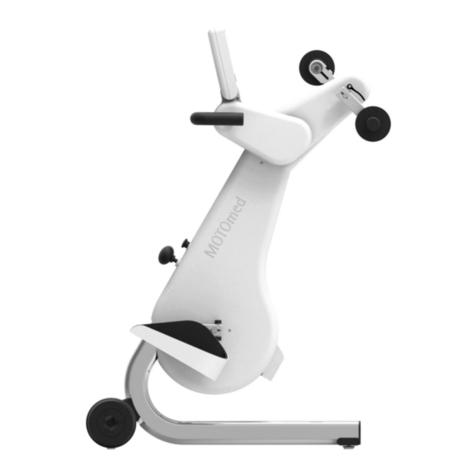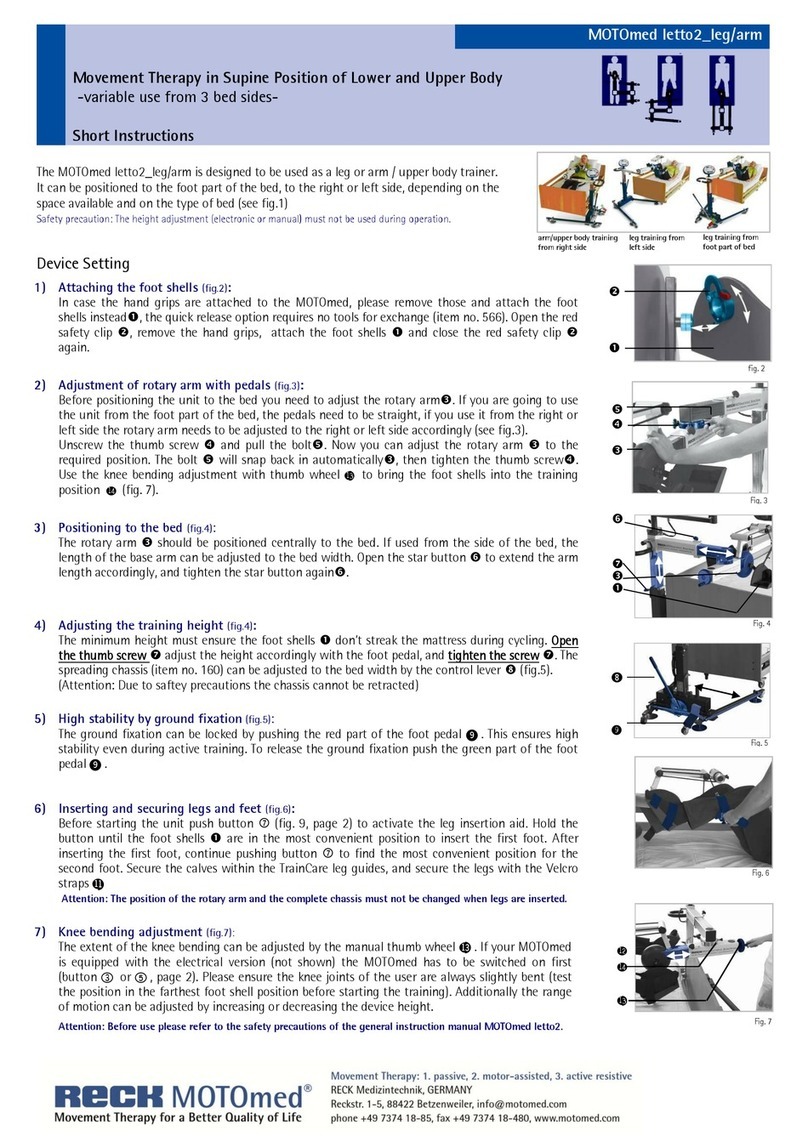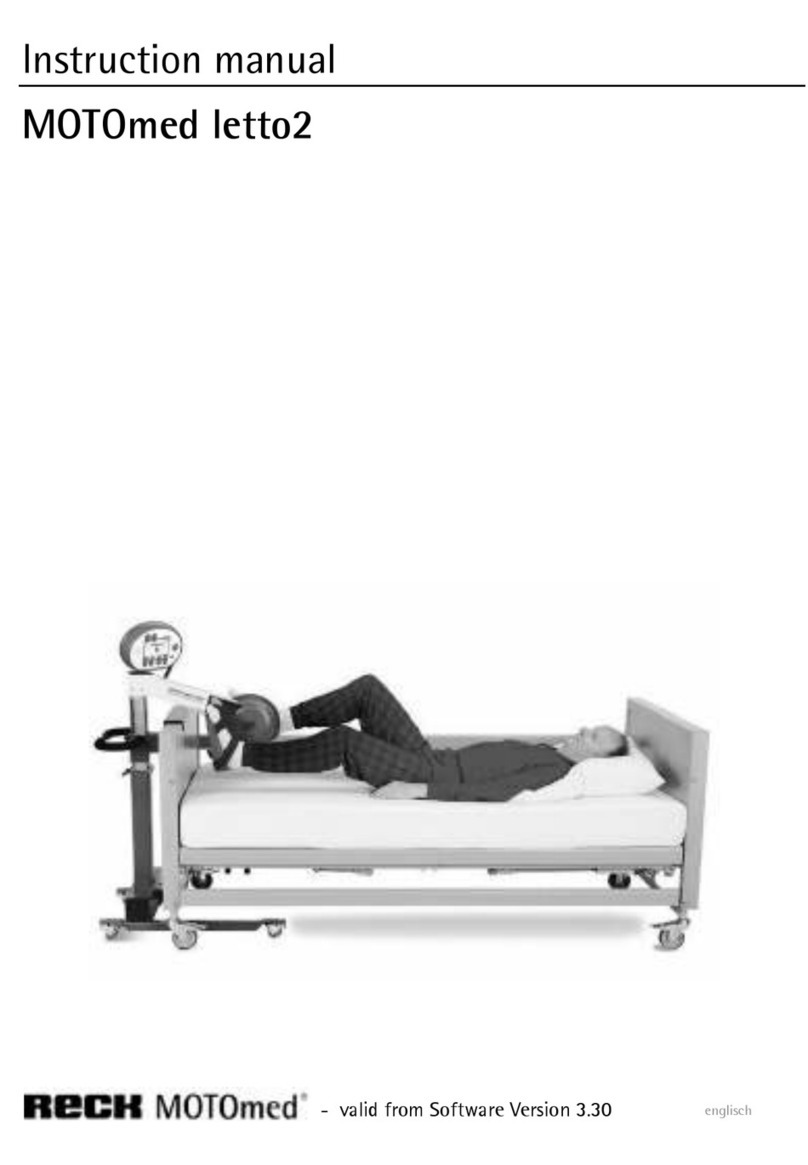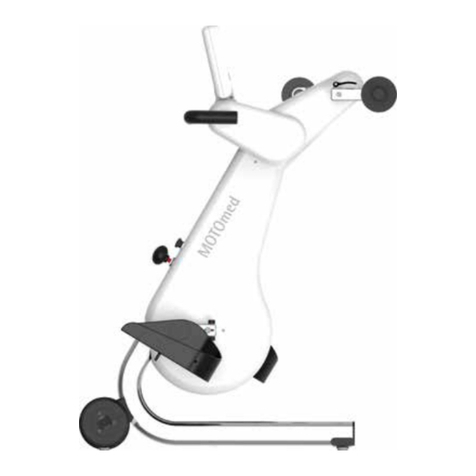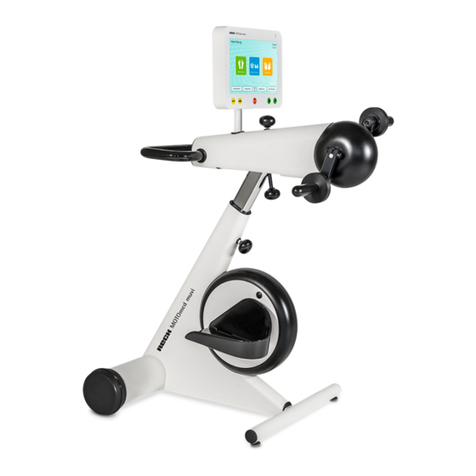
2
Please use the MOTOmed only after you have read the instruction manual.
If you should not understand the language of the present version, please
request the instruction manual in your native language.
Benutzen Sie das MOTOmed erst, nachdem Sie die Gebrauchsanweisung
gelesen haben. Sollten Sie die vorliegende Sprachversion nicht verstehen,
fordern Sie bitte eine Anleitung in Ihrer Landessprache an.
Avant de commencer votre entraînement MOTOmed, veuillez lire les
instructions d'utilisation. Si ces instructions d'utilisation ne correspondent
pas à votre langue, n‘hésitez pas à nous demander une autre traduction.
Utilice el MOTOmed sólo después de haber leído las instrucciones de uso.
Si no entiende el idioma de la presente versión, por favor exija un manual en
su lengua nacional.
Use o MOTOmed somente, depois de ter lido as instruções de operação.
Em caso que você não compreenda a língua desta instrução, peça por favor
uma orientação em sua língua nacional.
Per un ottimo funzionamento del MOTOmed leggere le istruzioni per l‘uso.
Se riscontrate qualche difficoltà riguardo la vostra lingua madre consultate il
vostro servizio assistenza.
Neem uw MOTOmed pas in gebruik nadat u de gebruiksaanwijzing hebt
gelezen. Indien de gebruiksaanwijzing niet overeenstemt met uw moedertaal,
aarzel dan niet ons te contacteren en een andere taalversie aan te vragen.
Använd MOTOmeden endast, efter du har läst fungerande anvisningen.
Om dig bör inte förstå den tillgängliga språkversionen, förfrågan var god a
vägledning i ditt nationella språk.
MOTOmed må først anvendes, når brugsanvisningen er gennemlæst.
Forstår du ikke vedlagte brugsanvisning, rekvirer en dansk vejledning hos
ProTerapi.
Przed skorzystaniem z urządzenia MOTOmed prosimy zapoznać się z
instrukcją obsługi. Jeśli instrukcja obsługi jest napisana w języku obcym
ządajcie Państwo instrukcji w języku przez Państwa znanym.
GB
DE
FR
ES
PT
IT
NL
SV
DK
PL
RU






